I enter with excitement into a field, picture frames or mirror frames, which I can now say, after days of research, is a fascinating field. I have discovered a wonderful world, in which painters, architects, sculptors, framing specialists working with famous auction houses and famous museums are mixed. The information is so rich and interesting that I propose a series on the subject of frames. Don't expect a specialist's dissertation. I just want to share with you this new world that I am enthusiastically beginning to discover. So, here comes the pilot!
Role of the ream
I'm not a connoisseur, but I instinctively knew that a frame couldn't be chosen anyway. I say that because, at one point, I had to frame a few paintings and I think I exasperated the folks at a local frame shop. I had the expectation that the frame would match the painting, me, the house, everything. The proposal to use the same frame for two different paintings seemed downright indecent to me. At the time I thought I was being pretentious. Now I discover that I had very little pretence indeed.
The frames are considered the Cinderellas of the art world, as it saysEmma Crichton-Miller at Christie's auction house in London. They support art from the shadows, putting it in the spotlight, and are rarely noticed.
The frame is not just to protect a work of art, its task is much more complex. Of the services Cinderella performs for her mistress, the painter, the most important are:
- highlights the artwork
- presents the work by drawing attention to colours and patterns and allowing them to resonate with the viewer
- suggests to the viewer the value to be attached to the work
- accompanies the painting in its space, being the link between the art and the place where it is exhibited - museum, gallery or private house.
The frames are somewhere between furniture and artwork. In the past they were made by famous sculptors of the time specifically for a particular painting. Experts in framing paintings at auction - frame makers, as they are called - say that 9 times out of 10 the frame that best matches the painting is one made at the same time as the painting or a copy of one. As we are slowly discovering the importance of the frame I think it would be a good time to look at when it first appeared and how it evolved.
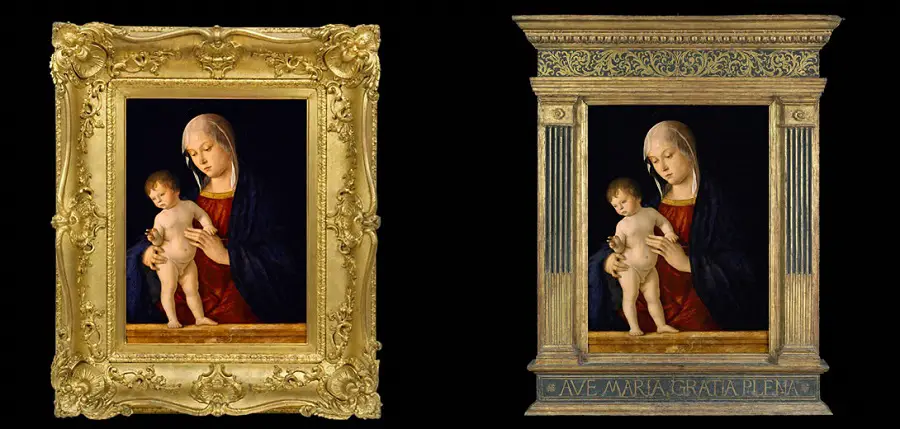
Beginning period of the branch
Information about frames dates back thousands of years. Some sources speak of oars discovered in ancient Egyptian tombs from 200 BC, others say that the first oars discovered are over 4000 years old.
But the "great-grandparents" of the modern ream are in the 11th-12th centuries, in close connection with the church. They were works that were made for the altar, and the painting and the frame formed a whole. A groove was cut into the piece of wood to be painted, separating the painted part from the frame. The frame was carved first, often with elements of the Gothic style of cathedrals, and then the painting was done.
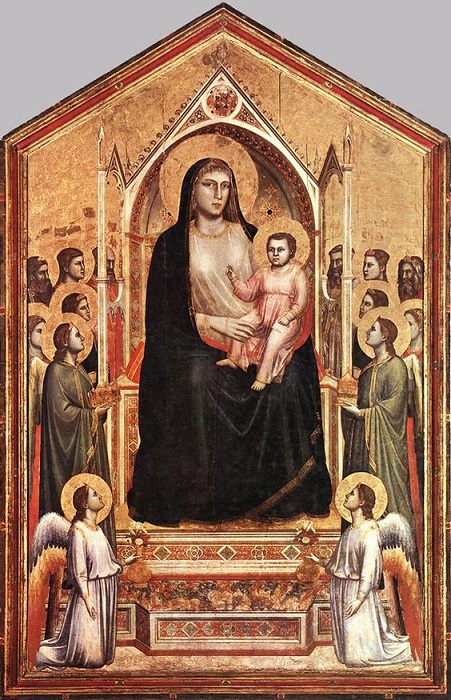
The Renaissance was the period when painting came out of the church. Wealthy families began to commission paintings just for themselves. This is the period when the separate frame of the painting appeared and could be replaced. It was the architects who made the first frames. Basically they are the forefathers of the old masters. The frames copied the lines of the temples, the way the sides joined, the decorations. The frame was seen as a door, as a window opening onto a fragment of life. This is the period in which the frame appeared, very similar to today's, with the same pattern on all sides. The frame itself has a straight or slightly wavy central part between mouldings that can be decorated. This type of frame is called tapeand I'll get back to it.
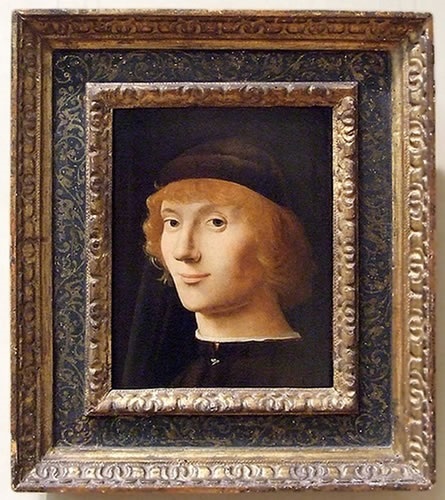
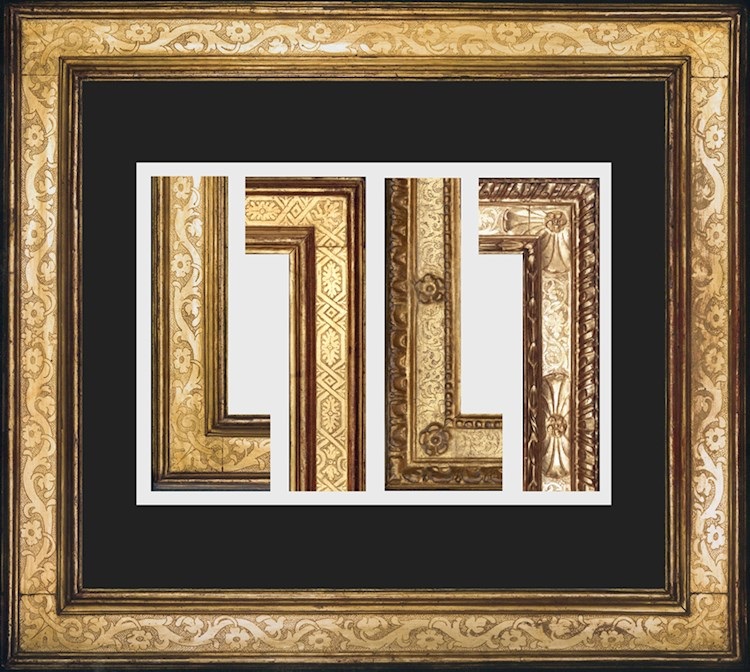
If in the Renaissance period the way frames looked in different countries was very similar, in the Mannerist period that followed, frames began to have designs specific to certain countries and trends. We find Italian-style frames, with exaggerated decorations, distortion of classical motifs and optical effects (frames "Sansovino"), in the English style, more temperate in terms of ornamentation, with leaves, twisted elements and segmentation (frames "Sunderland") or in Dutch style, with elements suggesting the flow of molten silver combined with marine representations.
With this period frames started to be made by furniture manufacturers. They followed the same evolution as the furniture frames appeared in baroque style, rococo or art nouveau. The advent of industrialisation and machines that could easily reproduce patterns led to an increase in the production of frames and much easier access to them. Slowly, cheaper but less history- and art-laden offerings appeared for the general public. Frames became a common commodity and people began to forget their value. But there is a guild that continues to treat frames as works of art.
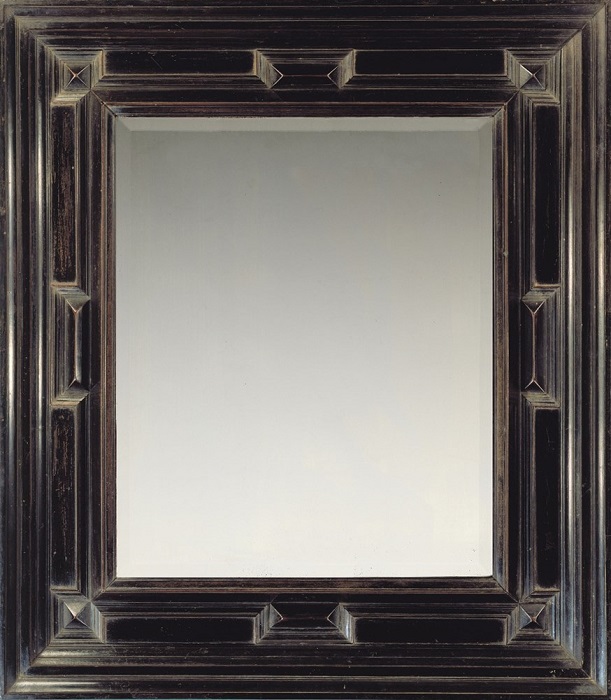
photo source: paulmitchell.co.uk
Wood and frames
You're probably already wondering where the wood is. Especially since there are now a lot of frames that are made of any material but wood. Wood is and has been since the beginning tightly bound to the frame.
After the frame was separated from the painting it was always carried out on a wooden frame. In Italy, tape was made of carved wood that was coated with a solution of chalk and bone glue - liquid gypsum. It hardened to become rock-hard and was carved to make ornaments and relief elements.
The wooden frames were made of poplar wood, easy to carve, or more uniform lime wood. This wood, because it did not stand out, was gilded and decorated, increasing its value. Less valuable wood was used for the secondary parts of the frame, which was not very easy to carve either: fir, spruce, pine.
Nucul was used for its fine texture and colour. For this reason it was not "hidden", the gilding was discreet and without covering it completely. In England it was also used oak treealso as special wood. In Italy, oak was less used, with preference for chestnut and ulmul. It was also used hairwood or plum trees, but the fact that they were fruit trees limited their felling.
When from the colonies began to be brought wagons, it has become a favourite of rowers. It was decorated with tortoise shells and gemstones, making it a real jewel. The more austere, patterned black Dutch frames are recognised and appreciated worldwide.
Valuable veneer was also used for decoration. Parts of the frame were covered with specially designed veneer made from the rafter or from those growths on the tree - burl. The veneer obtained from these 'burls' has an incredible design.
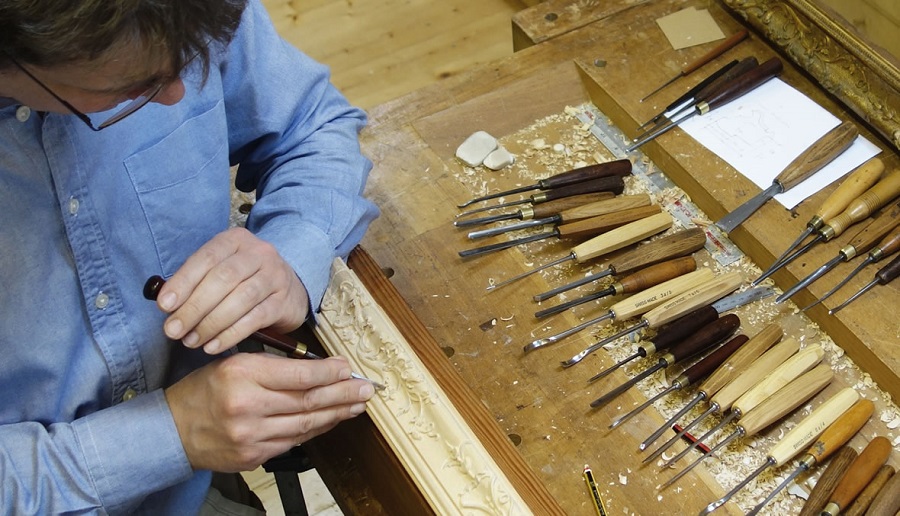
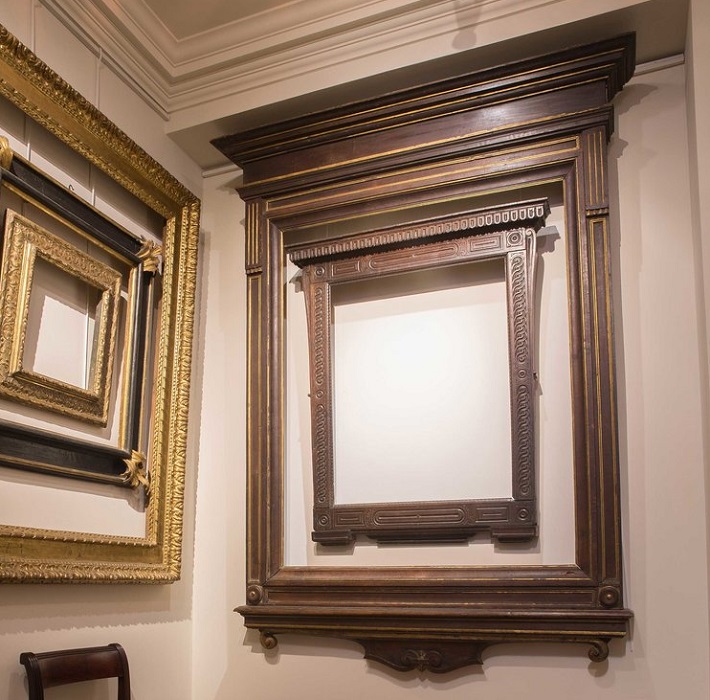
The art of framing
There is undoubtedly an art of framing. There are stories in this world so little known that they can become legends. To give you an idea, here's how Michael Gregory of Arnold Wiggins&Sons, a firm specialising in antique frames, has been searching for 22 years for the perfect frame to frame a painting of a Dutch classic. And Paul Mitchell, of the London frame company that bears his name, framed paintings for Christie's, Sotheby's and Bonhams auction houses, selling them for much higher than expected.
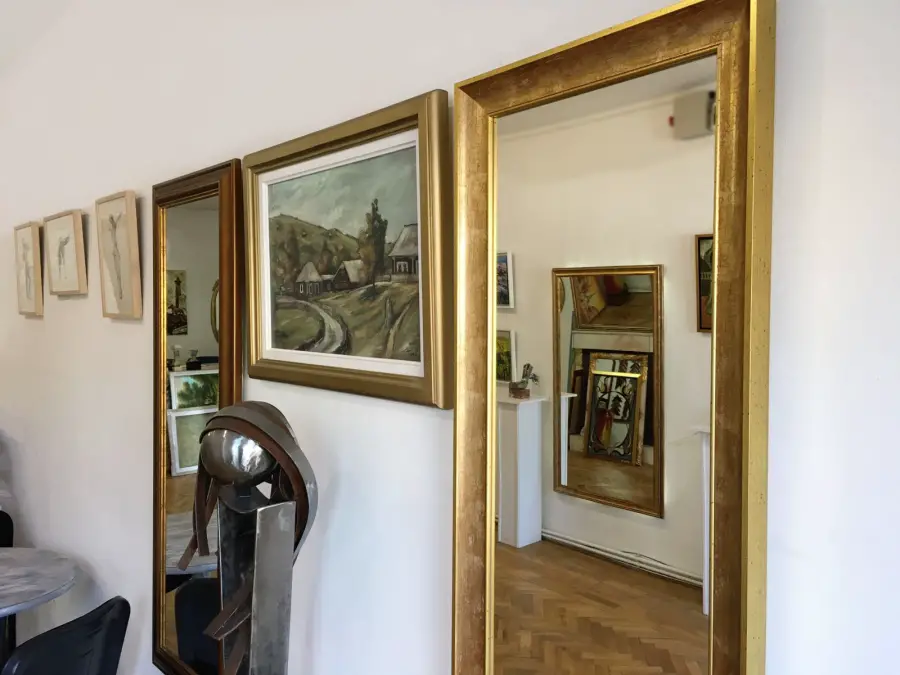
Paintings and mirrors are the most impactful decorations you can use to personalise a room. The wooden frames in the pictures, produced by Holzart, can be admired in the showroom in Cluj-Napoca. The profiles are available in various finishes and sizes. There are simple frames, classic style frames, decorative frames with gold, silver or patinated finishes, with vintage or rustic touches, you'll find exactly what you need to create the desired ambience.
It's very clear to me now that frames can be talked about endlessly. I fear that, in my desire to say as much as possible, I have not been very clear in my exposition. I promise that in the future I will "attack" just one topic related to frames and develop it at length.
Framing is certainly an art and it can be extended beyond paintings. I've read entire works about mirror frames, how mirrors and the art of framing them have evolved over time. And what we know now, with the mirror mounted on the wall in 4 corners is a recent solution that came out of convenience, maybe even lack. But the mirror has always been framed. And in this case the frame is the Cinderella that delineates, frames and furnishes the mirror with the house. But about mirror frames I will talk in the next related post.
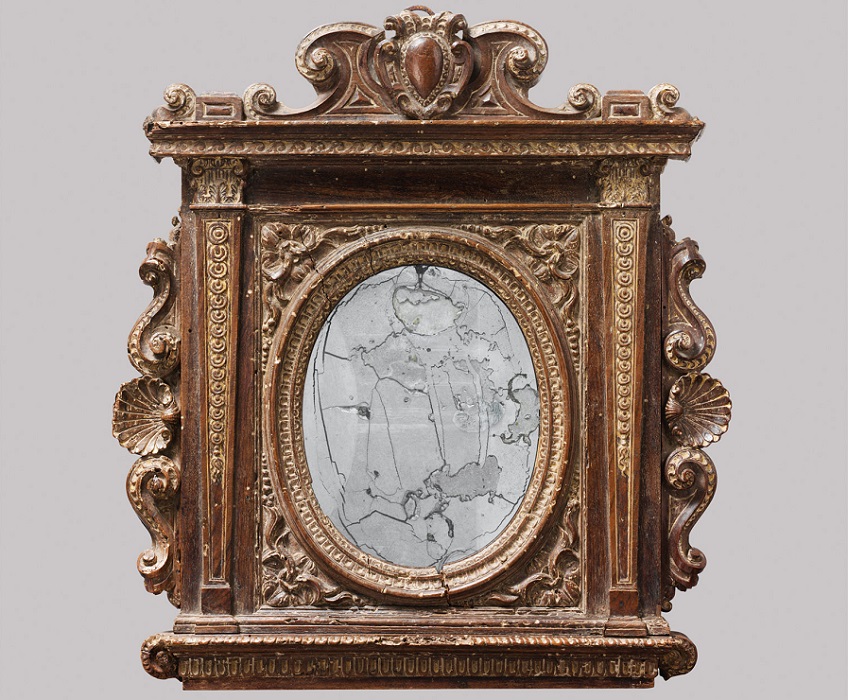
photo source: metmuseum.org






























You might be happy to know that in Romania there is a Roman-American manufacture that restores antique frames, custom makes faithful reproductions of historical frames and creates original museum quality frames. The production of this manufacture is dedicated to its American and Western European customers. Check our website http://www.roscas.ro
Congratulations on the above article. I didn't think I would see in Romania articles inspired by Paul Mitchell's work and experience.
Thank you!
Since you want to write more about frames in the future, let me tell you that frames are appreciated primarily for their execution, style and craftsmanship. The most commonplace and affordable of frames are the modern ones, made from INDUSTRIALLY PRE-FINISHED, 45-degree cut and stapled frames, as they have been in all the frame/frame workshops in the world since the late 19th century. But vintage frames were hand-made for a specific work, with a look and finish in dialogue and complete communion with the work to be framed. In such frames you don't see the joints and asymmetries at the corners, on the contrary, there are some ornaments or at least some distinct cartouches that break the monotony of the mechanically machined wand. The frames thus designed seem to be carved from a single piece of wood, always with a certain piece of art in mind. Such frames are first assembled in raw wood which is then carved, coated with a special primer and gilded. In English they are called closed corner frames and the people who make them are called framemakers as opposed to the framer who makes frames from foil. Paul Mitchel would be seriously offended if you called him a framer, he is a frame maker, historian and author.
All frames prior to the early 19th century were closed corner frames. They were built like houses, from the foundation up. If you uncover Paul Mitchell you will find that there was a time when frames were architectural elements and cost considerably more than paintings.
As a curiosity, I will also tell you that the great museums of the world acquire valuable antique frames to use with their poorly framed or, for various reasons, unframed works. In the absence of original frames of the right style, period and region, those museums resort to reproductions of frames that are suitable in age, location and style. A few years ago the Metropolitan Museum in New York paid Eli Wilner & Co. of NYC, the city that never sleeps, over $500,000 (almost $800,000) for a frame reproduction. It's the frame that today frames Emmanuel Leutze's "George Washington Crossing the River Dellaware". The original frame was lost 100 years ago, but the author's sketches and a photograph were preserved to make it possible to reproduce it. I give you a link to that project http://www.eliwilner.com/projects/washington-delaware.php and the Eli Wilner & Co. website.
You talked about such frames above when you mentioned ancient frames and their reproductions quoting and reproducing from Paul Mitchell's writings. Holtzart can only be overwhelmed that you mentioned it in that context.